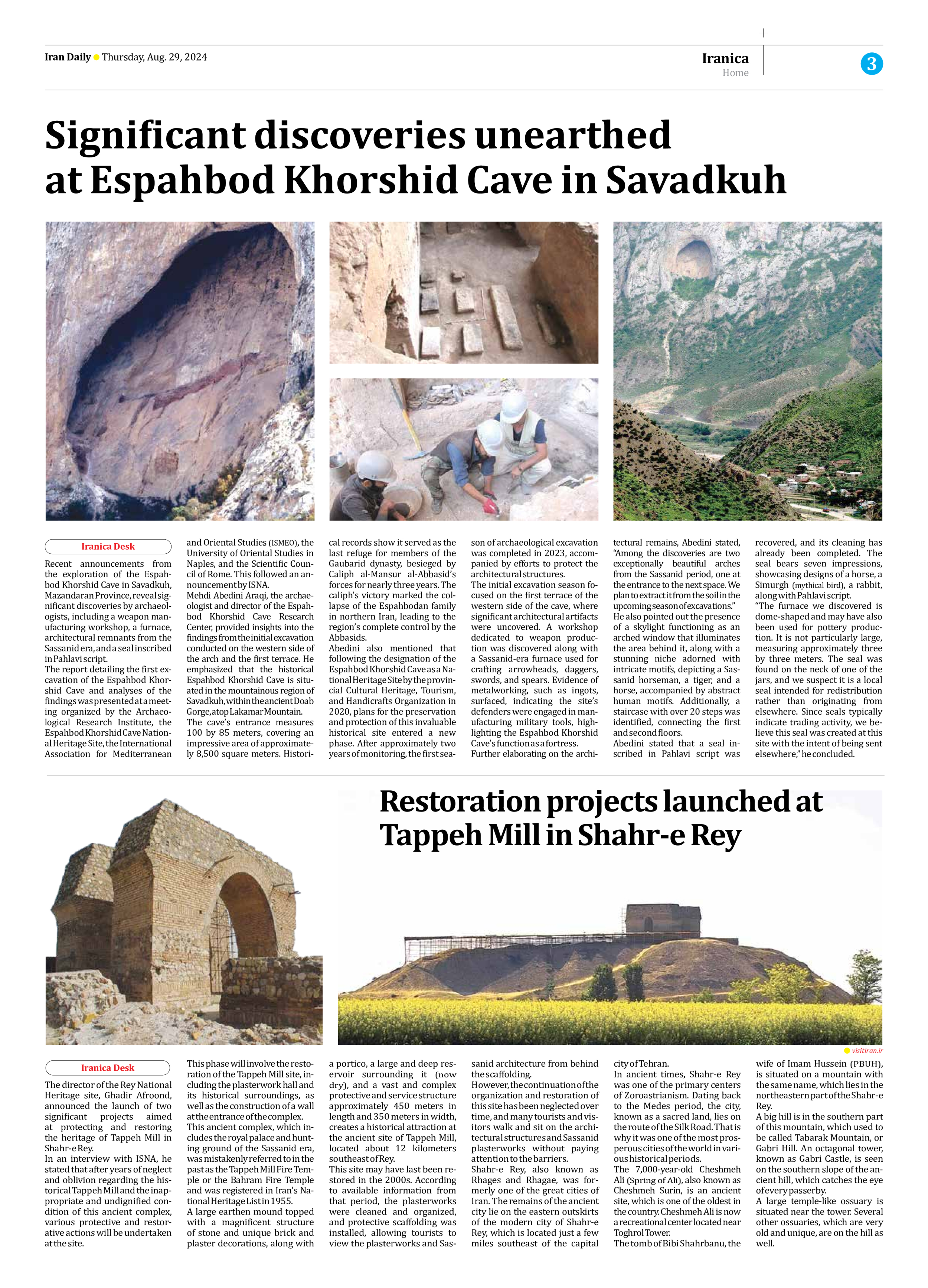
Significant discoveries unearthed at Espahbod Khorshid Cave in Savadkuh
Recent announcements from the exploration of the Espahbod Khorshid Cave in Savadkuh, Mazandaran Province, reveal significant discoveries by archaeologists, including a weapon manufacturing workshop, a furnace, architectural remnants from the Sassanid era, and a seal inscribed in Pahlavi script.
The report detailing the first excavation of the Espahbod Khorshid Cave and analyses of the findings was presented at a meeting organized by the Archaeological Research Institute, the Espahbod Khorshid Cave National Heritage Site, the International Association for Mediterranean and Oriental Studies (ISMEO), the University of Oriental Studies in Naples, and the Scientific Council of Rome. This followed an announcement by ISNA.
Mehdi Abedini Araqi, the archaeologist and director of the Espahbod Khorshid Cave Research Center, provided insights into the findings from the initial excavation conducted on the western side of the arch and the first terrace. He emphasized that the historical Espahbod Khorshid Cave is situated in the mountainous region of Savadkuh, within the ancient Doab Gorge, atop Lakamar Mountain.
The cave’s entrance measures 100 by 85 meters, covering an impressive area of approximately 8,500 square meters. Historical records show it served as the last refuge for members of the Gaubarid dynasty, besieged by Caliph al-Mansur al-Abbasid’s forces for nearly three years. The caliph’s victory marked the collapse of the Espahbodan family in northern Iran, leading to the region’s complete control by the Abbasids.
Abedini also mentioned that following the designation of the Espahbod Khorshid Cave as a National Heritage Site by the provincial Cultural Heritage, Tourism, and Handicrafts Organization in 2020, plans for the preservation and protection of this invaluable historical site entered a new phase. After approximately two years of monitoring, the first season of archaeological excavation was completed in 2023, accompanied by efforts to protect the architectural structures.
The initial excavation season focused on the first terrace of the western side of the cave, where significant architectural artifacts were uncovered. A workshop dedicated to weapon production was discovered along with a Sassanid-era furnace used for crafting arrowheads, daggers, swords, and spears. Evidence of metalworking, such as ingots, surfaced, indicating the site’s defenders were engaged in manufacturing military tools, highlighting the Espahbod Khorshid Cave’s function as a fortress.
Further elaborating on the architectural remains, Abedini stated, “Among the discoveries are two exceptionally beautiful arches from the Sassanid period, one at the entrance to the next space. We plan to extract it from the soil in the upcoming season of excavations.”
He also pointed out the presence of a skylight functioning as an arched window that illuminates the area behind it, along with a stunning niche adorned with intricate motifs, depicting a Sassanid horseman, a tiger, and a horse, accompanied by abstract human motifs. Additionally, a staircase with over 20 steps was identified, connecting the first and second floors.
Abedini stated that a seal inscribed in Pahlavi script was recovered, and its cleaning has already been completed. The seal bears seven impressions, showcasing designs of a horse, a Simurgh (mythical bird), a rabbit, along with Pahlavi script.
“The furnace we discovered is dome-shaped and may have also been used for pottery production. It is not particularly large, measuring approximately three by three meters. The seal was found on the neck of one of the jars, and we suspect it is a local seal intended for redistribution rather than originating from elsewhere. Since seals typically indicate trading activity, we believe this seal was created at this site with the intent of being sent elsewhere,” he concluded.







